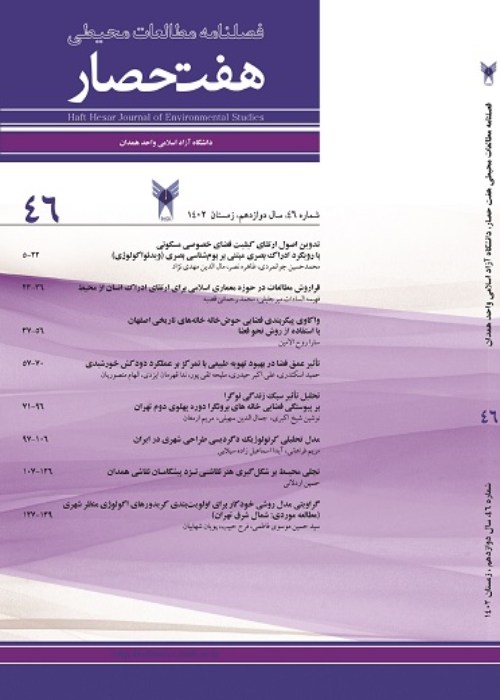Codification conceptual framework of education for students in architecture Primary design studios: A qualitative content analysis
Coordination of education categories and activities of novice students in architectural primary design studios is indispensable and can lead to the designing ability development and transition towards professionalism and proficiency. The objective is a conceptual framework for architectural education based on the categories of architectural education and novice studentschr('39') activities in architecture primary design studios. The article used qualitative content analysis at the level of words and concepts. To formulate the framework and find the inner meaning of the attitudes and priorities of architectural education in teaching methods, architectural education, and design process. The data collection method is a documentation method; 84 references are searched many times and are related to architectural knowledge, novice, design ability, design process, and design thinking are selected. The article developed a conceptual framework of architectural education for novice students by analyzing texts, collecting internal and external scientific information, and examining the architectural design studiochr('39')s position following the extraction and inference of architectural education categories and design studio activities. After identifying the research objective and question, content analysis and interpretation was made in three stages. Coding was done by studying the common texts, words and concepts, and analysis, separation, integration, and aggregation. Education conceptual categories were formed in the architectural design studios. Educational activities were finally found to cover the categories, and the final framework of education was formulated. Content analysis and definition of categories, activities and the relationship between them were used. Via representing the data collection protocol, the analysis and coding process has contributed to the research reliability. The research findings reveal six categories using analysis, table, and form, including ability, architectural thinking, studio effectiveness, collaborative learning, media, and assessment. Each of these categories has sub-categories that designate the novice studentschr('39') design needs. Activities to enhance the needs of a novice student of architecture were found to fit and cover several categories, including six series of activities studies, building analysis, model building, sketches, various media, and expression evaluation. The design process takes place in an intricate reciprocal motion in the human mind. Inspired by expert architectschr('39') work, convergent and divergent thinking, and reflection on the design process, collaboration, and critique in the studio activities, novice students, eventually develop ideas, create a space, and generate a schema. In this way, individual abilities to construct concepts and understand the problem of design are improved.
- حق عضویت دریافتی صرف حمایت از نشریات عضو و نگهداری، تکمیل و توسعه مگیران میشود.
- پرداخت حق اشتراک و دانلود مقالات اجازه بازنشر آن در سایر رسانههای چاپی و دیجیتال را به کاربر نمیدهد.



